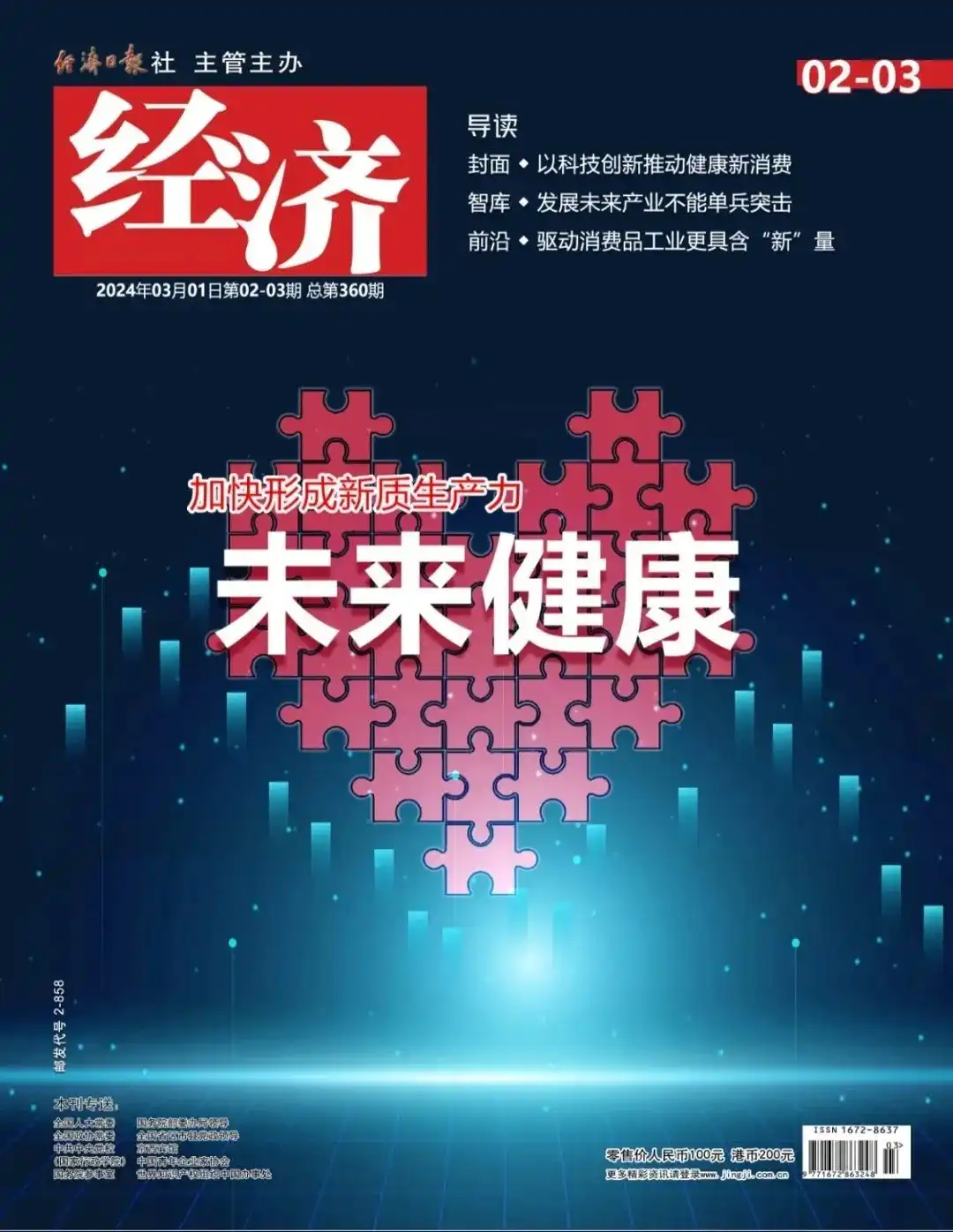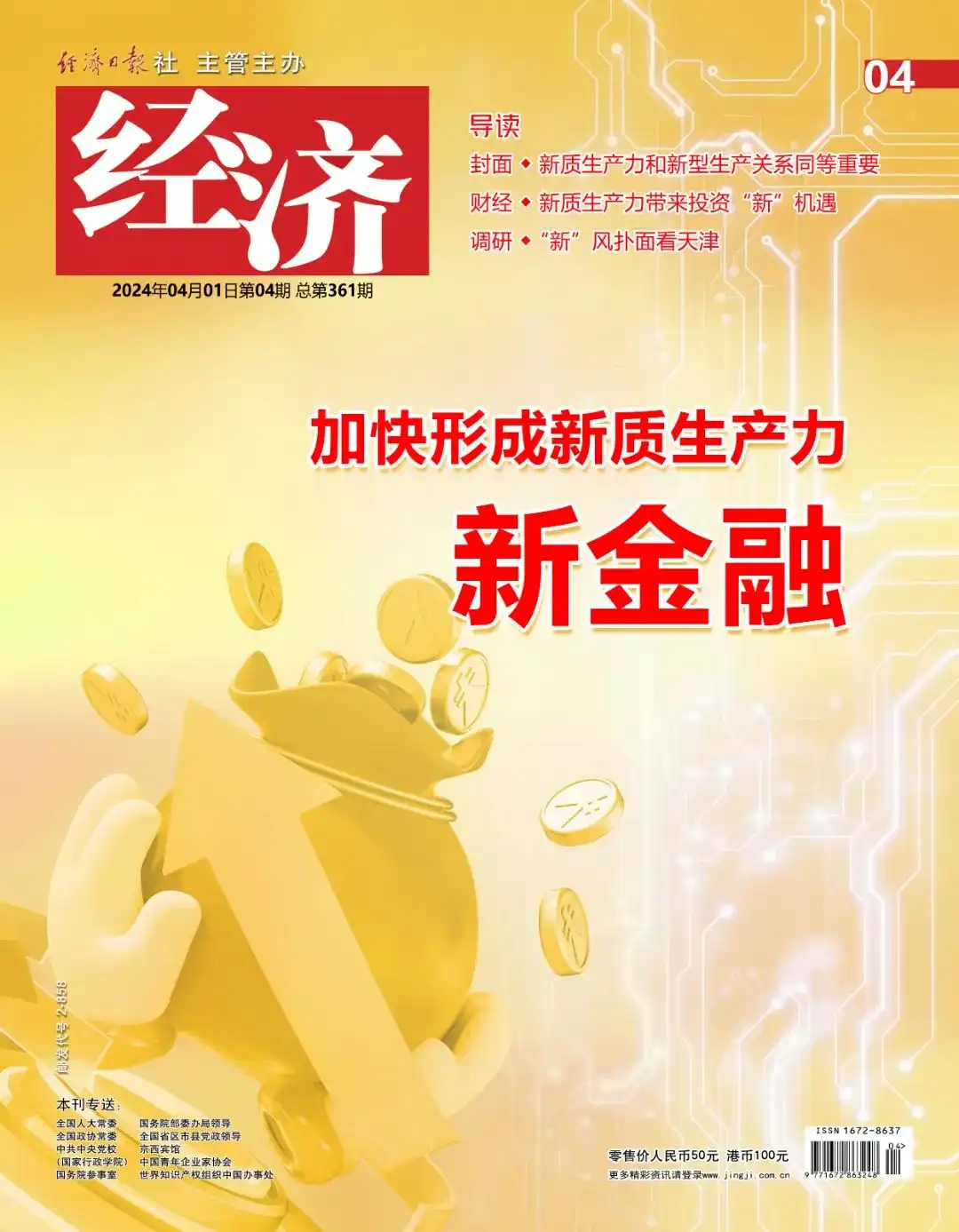new quality productivity:A new engine to promote high-quality economic development
"New quality productivity" is a high-frequency hot word in recent policies. From the perspective of evolution, the development of new productive forces has become the main line of policy promotion. Productivity is the ability of human beings to create material wealth in production activities, and is therefore the direct driving force for social and economic development and progress. It includes many elements such as workers, labor tools, labor objects, and social and cultural institutional environment. As the name suggests, new quality productivity is a new quality productivity that is different from traditional productivity. So, what is new productivity? What is its specific connotation? What are the characteristics? Why should we emphasize the development of new productive forces? How to accelerate the development of new productive forces?
Connotative characteristics of new quality productivity
The "newness" of new quality productivity is reflected in the fact that it is different from traditional productivity in the general sense. It takes new technologies, new economies, and new business formats as its main connotations, involves new fields and has high technological content; while "quality" emphasizes innovation-driven as a key element of productivity, a productivity leap led by key disruptive technological breakthroughs to achieve self-reliance and self-reliance. Therefore, new productivity is the productivity in which scientific and technological innovation plays a leading role. It represents a key transformation and marks the advent of a new era of science and technology, innovation, and high-quality production. New-quality productivity has gotten rid of the traditional growth path and meets the requirements of high-quality development. It is a more integrated and new productive force in the digital era.
New quality productivity takes the leap of workers, labor materials, labor objects and their optimized combinations as its basic connotation, and takes the significant increase in total factor productivity as its core symbol. Therefore, the essence of new quality productivity is the improvement of total factor productivity with Chinese characteristics.
Total factor productivity was first proposed by the famous economist Solow in 1957:Capital and labor are the two major factors driving economic growth, while total factor productivity reflects the contribution of factors other than capital and labor to output growth, also known as Solow residual. With total factor productivity unchanged, the marginal effect of capital and labor factor investment declines, and the return on investment declines. China makes it difficult to maintain long-term growth. Therefore, long-term sustained growth of a country's economy can ultimately only rely on the continuous improvement of total factor productivity.
There are two main ways to improve total factor productivity:The first is technological progress, and the second is improvement in resource allocation. 这与全国两会《政府工作报告》中的政策思路相吻合:一方面强调创新和科技的重要性,并且从融资方面支持企业对技术的研发,如科技金融、绿色金融、数字金融、扩大有效投资重点支持科技创新等;另一方面通过各种政策引导要素资源从低效率向高效率转移,如适度超前建设数字基础设施等新质产能,并且防止旧产能过剩和低水平重复建设,健全制度,全方位培养用好人才等。
与传统生产力相比,新质生产力具有以下几个特征:First, scientific and technological innovation leads. 新质生产力强调在关键领域和核心技术上取得突破,从而推动生产力的整体跃升。这种以科技创新为核心驱动力的特征使得新质生产力具有更高的技术含量和更强的市场竞争力。 The second is high efficiency and high quality. 新质生产力强调通过优化资源配置、提高生产效率、降低生产成本等方式,实现生产力的快速发展。这种高效能与高质量的特征使得新质生产力在推动经济社会发展中发挥着重要作用。 The third is integrated development. 新质生产力强调不同产业、不同领域之间的深度融合和协同发展。通过跨界融合和协同创新,新质生产力能够打破传统产业的界限,推动产业结构的优化升级,形成新的经济增长点。 The fourth is sustainable development. 新质生产力强调在推动经济增长的同时,关注环境保护、资源节约和社会公平等问题。通过采用清洁能源、推广循环经济等方式,新质生产力努力实现经济、社会和环境的协调发展。以上四个特征使得新质生产力成为推动经济社会发展的重要力量,能够为实现经济高质量发展提供有力支撑。
The realistic background for developing new productive forces
Why develop new productive forces? This issue can be interpreted from the following aspects:
First of all, from the perspective of the internal environment, 2011年以来中国经济增速逐步放缓,增长方式由数量红利向质量红利转变,过去依靠劳动和资本投入驱动的粗放型增长模式,已经难以满足当前经济高质量发展的要求。国家统计局数据表明,近年来中国GDP增速的中枢持续下滑,由2000年—2008年的10.5%回落至2009年—2019年的7.8%,2020年—2023年则进一步回落至4.8%,2023年以房地产为代表的传统经济在GDP中的占比下滑至25.9%。
At the same time, the problems of China's population aging and minority births have become increasingly prominent, and the demographic dividend has gradually disappeared. In 2023, China's population aged 16 - 64 will account for 68.3%, down 6.2 percentage points from the peak of 74.5% in 2010. This may indicate two trends:First, labor-intensive industries may be partially transferred to other countries; second, labor productivity must be improved. If resources, labor and capital investment are the same, if the amount of value created by unit of labor is not high, then as the demographic dividend decreases, the problem of low added value will become more prominent.
At present, China's economy is in a critical period of transformation from traditional resource and labor-intensive industries to high-tech and high value-added industries. Accelerating the development of new productive forces is the key to realizing the transformation of old and new driving forces and high-quality economic development.
Secondly, from the perspective of the external environment, 一方面,新一轮科技革命和产业变革呈现跨领域技术深度交叉融合、技术应用创新迭代加速、数据要素重要性提升、科技革命与产业联系更加紧密的特征,顺应全球技术变革是中国实现产业转型升级、构筑新竞争优势的重要机遇。为此,需要新的生产力理论进行指导,需要新的经济科技体制框架作为支撑,加快发展新质生产力是完善现代产业体系的重要一环。
On the other hand, the current economic globalization is facing countercurrent, trade protectionism and unilateralism are on the rise around the world, and in the face of key core technical problems that are "stuck necks", the urgency of domestic independent control has increased. At the same time, global competition around the world is becoming increasingly fierce in cutting-edge areas such as key technologies, data and industries. In this context, promoting the development of new productive forces to win the initiative in development is particularly important in international competition.
Ways to realize new quality productivity
How to accelerate the development of new productive forces? New quality productivity is driven by innovation and takes the leap of workers, labor materials, labor objects and their optimized combinations as its basic connotation. It is mainly reflected in the continuous presentation of new technologies, new economies, and new business formats. To this end, developing new productive forces should start from the following aspects:
First of all, from the perspective of new technologies and related new industries, new productivity mainly includes strategic emerging industries and future industries. 战略性新兴产业是拓展更广范围的劳动对象中的重点领域,包括新一代信息技术、生物技术、新能源、新材料、高端装备、新能源汽车、绿色环保以及航空航天、海洋装备等领域。其中,新一代信息技术、人工智能、生物技术、高端装备、绿色环保等,是“创造和应用更高技术含量的劳动资料”推动传统制造业企业智能化、数字转型、绿色转型的重要支撑。此外,数据要素在新质生产力中的重要性较高,应可以关注大数据及相应的物联网、工业互联网、工业软件等技术应用领域。目前对未来产业还缺乏具体的定义,但从当前公布的政策看,应重点关注量子技术、生命科学、类脑智能、基因技术、未来网络、核聚变等前沿科技和产业变革领域。在新质生产力中,人工智能可能成为重中之重,涉及通信、电子、传媒、计算机等行业;其中,机器人行业涉及机械和汽车行业。同时,生命科学、生物制造、创新药涉及医药行业;新材料主要涉及新能源和有色行业;量子技术涉及通信和计算机行业;氢能涉及新能源行业;低空经济和商业航天涉及军工、通信和机械行业;脑机接口涉及医药行业;先进半导体涉及电子行业;等等。
Secondly, from the perspective of new business formats, the development of new quality productivity should focus on the two major directions of digital business integration and space expansion. The first is the integration of digital formats. “创造和应用更高技术含量的劳动资料”强调了数据要素的突出作用,强调数据要素可以通过与其他生产要素的结合、融合进一步放大价值创造效应,同时创造新的生产关系,即现有业态和数字业态跨界融合,衍生叠加出的新环节、新链条、新活动形态。应重点关注智能制造、数字贸易、智慧物流、智慧农业等新业态。 **二是空间拓展。**随着技术进步,可以作为劳动资料的领域持续扩大,应重点关注低空经济、深空深海开发、商业航天等新业态。
Third, from the perspective of new models, developing new productive forces should focus on the following aspects:The first is a new model of deep integration of the industrial chain and the innovation chain, which is the key to developing new productivity. 应建立产业链与创新链的协同机制,通过技术创新推动产业升级,实现产业链的高效运转和持续创新。同时,要关注产业链的垂直整合和横向协同,形成具有竞争优势的产业集群,提升整个产业的竞争力。 The second is a new model of intelligent manufacturing and digital transformation. 应推动制造业向智能化、数字化方向转型,通过引入先进的信息技术、人工智能等技术手段,实现生产过程的自动化、智能化和柔性化。同时,要关注数据资源的开发利用,推动数据驱动的决策和精细化管理,提升企业的运营效率和创新能力。 The third is a new model of green development and circular economy. 应推动绿色制造、绿色消费等绿色生产方式的普及,促进资源的循环利用和废弃物的减量化、资源化。同时,要完善绿色发展的政策体系和市场机制,引导企业和社会各界共同参与绿色发展和循环经济的建设。 The fourth is a new model of platform economy and sharing economy. 应关注平台经济和共享经济的创新发展,推动平台企业向更加开放、透明、共享的方向发展。同时,要完善相关法律法规和监管机制,保障公平竞争和消费者权益,促进平台经济和共享经济的健康有序发展。 The fifth is a new model of personalized customization and service-oriented transformation. 随着消费者需求的日益多样化和个性化,个性化定制和服务化转型已成为新质生产力发展的重要趋势。应关注消费者需求的变化,推动制造业向服务化方向转型,提供个性化、定制化的产品和服务。同时,要加强与服务业的融合创新,形成制造业与服务业相互促进、 共同发展的新格局。 (作者系厦门大学宏观经济研究中心教授、财政部财政政策研究专家)


